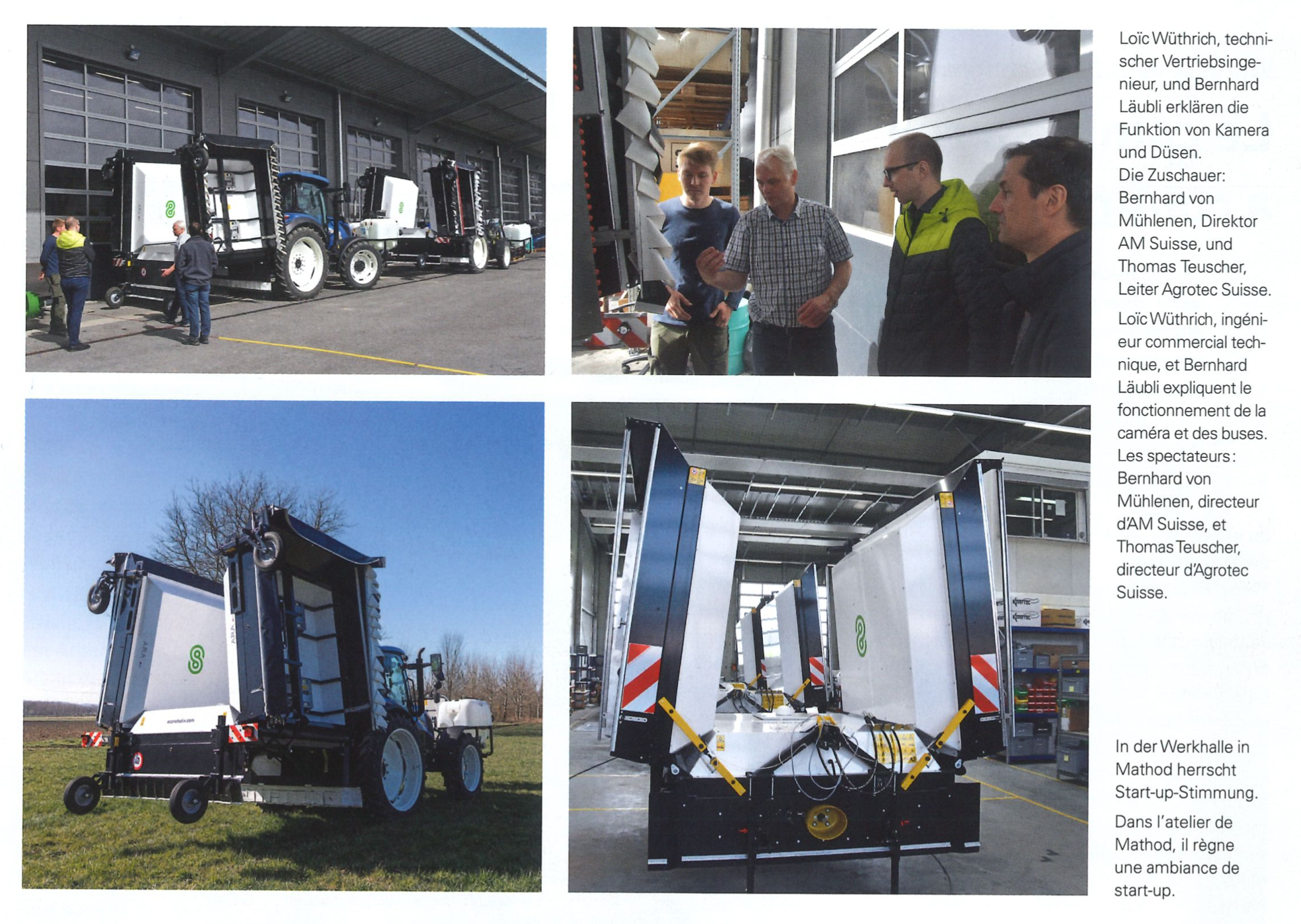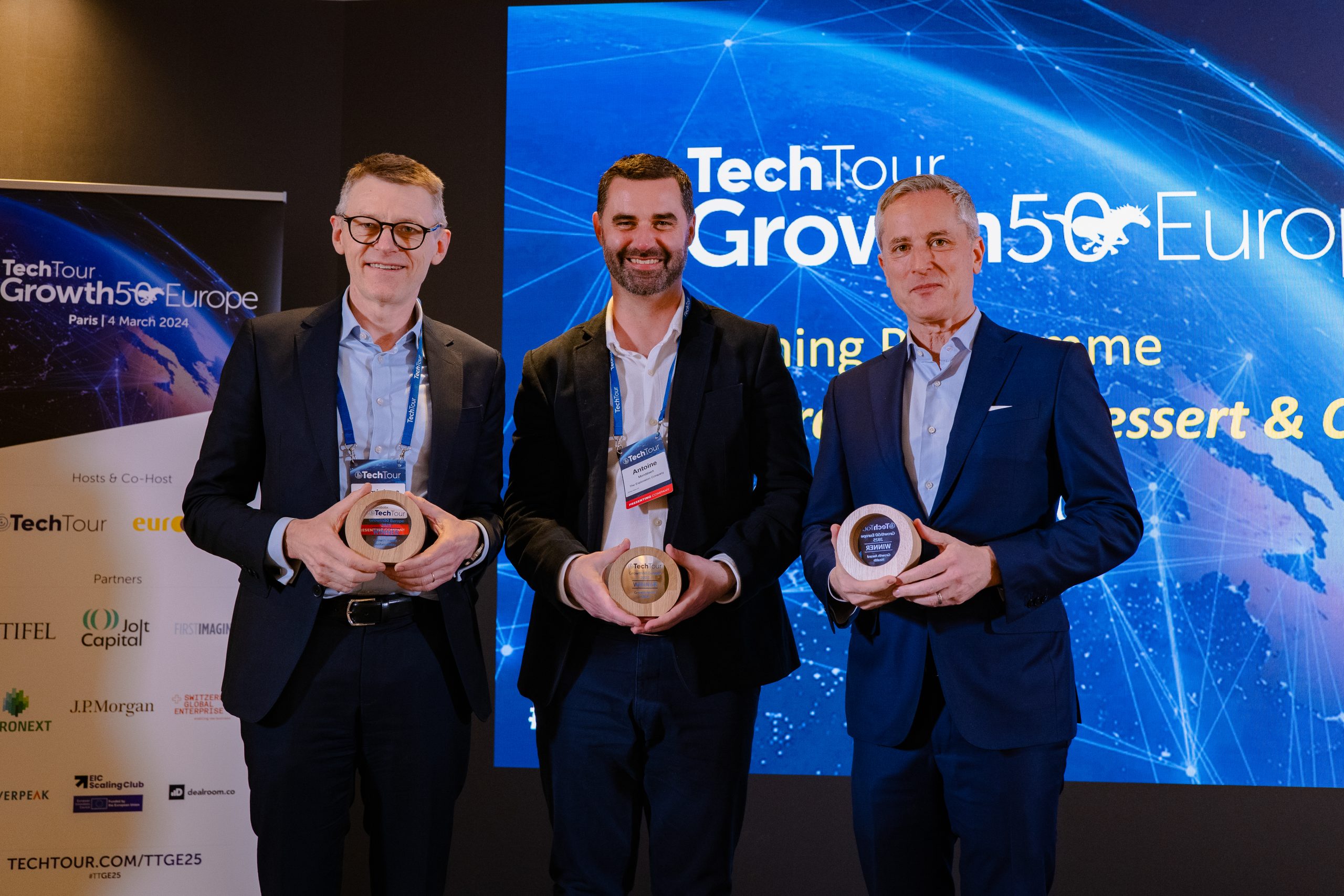Facial recognition for plants
Ara is an intelligent sprayer that focuses on individual plants. It works with cameras, a strobe light and artificial intelligence.
This article was published in issue 8-2022 of Profi, the German magazine for agricultural technology professionals. It provides in-depth information on the operation and performance of ARA.
If you don't have time for the whole article, here are some interesting excerpts:
Depending on the application, savings of between 40 and 90 % are possible, according to the manufacturer. The system also offers enormous savings potential for the application of fungicides or insecticides to crops. The trick is that the machine only sprays where plants have grown. The nozzles switch off if there are any shortage.
Profi 8-2022
As a basis for image analysis, two camera units are installed in each spray bonnet, each monitoring a working width of one metre. An RGB camera and an infrared sensor are integrated in each unit. The camera takes up to five pictures per second. To ensure that the photos are always comparably exposed, there is a stroboscopic flash light that switches on and off synchronised with the photo recordings.
Profi 8-2022
As a basis for image analysis, two camera units are installed in each spray bonnet, each monitoring a working width of one metre. An RGB camera and an infrared sensor are integrated in each unit. The camera takes up to five pictures per second. To ensure that the photos are always comparably exposed, there is a stroboscopic flash light that switches on and off synchronised with the photo recordings.
Profi 8-2022
ARA makes a strong impression
On June 28, 2022, Groupe Carré was holding their traditional demo day on their pilot farm in Gouy-sous-Bellone (France). Together with Eco-Phyt Association, the team at Groupe Carré showed their partners and members the trials and results they achieved this year.
One of the 4 workshops of the day was about ARA and its ultra-targeted weed control capacities. Our technology really made a strong impression!
Here are some excerpts, in case you don't feel like reading the whole stories.
[About ARA] "The goal is to offer efficiency and profitability to farmers, explains David Boucher, agronomy coach for Groupe Carré. In beets, the treatment frequency index (TFI) was divided by 3. This is interesting for the HEV, High Environmental Value certified farms."
Circuits Culture
"The camera captures a 120-cm width and takes 100 images per second, says Sébastien Branche, sales manager for France and Belgium at Ecorobotix. The images are processed to detect crops and weeds. Then the systems takes the decision to spray or not to spray."
Circuits Culture
There's a reduction in the amount of herbicide for all crops that were demonstrated. The most impressive is with onion: we used 95% less product! The Treatment Frequency Index (IFT) was divided by 10.
Terres & Territoires
Crop protection with artificial intelligence
This article was published in the June-July 2022 issue of Schweizer Landtechnik (German for "Agricultural Technology"), the Swiss magazine for professional agricultural engineering published by the Swiss Association for Technical Equipment in Agriculture (ASETA).
Crop protection with artificial intelligence
The ARA precision sprayer from Ecorobotix enables the targeted and customized application of herbicides, fungicides, insecticides and fertilizers in agriculture. The device is distributed by Bucher Landtechnik.
It all started with some young, somewhat utopian engineers who were thinking about revolutionary crop protection equipment. In 2014, they founded the company ecoRobotix in Yverdon and their prototype solar-powered weeding robot soon attracted attention. Today, they are focusing on the serial production of the ARA precision sprayer. The Ecorobotix production site in Mathod now employs over 40 people. By the end of the year, 35 machines will be in service in Switzerland and 10 abroad, with an upward trend. The buyers are mainly agricultural contractors, but Fenaco also rents several machines through agricultural cooperatives. This success is partly due to Bucher Landtechnik AG, which has entered into a strategic partnership with Ecorobotix and is responsible for distribution.
95% savings potential
Bernhard Läubli, head of the Precision Center division at Bucher Land technik AG, presents the device. The high-resolution 2D and 3D cameras enable the ARA to distinguish between plants and weeds and to automatically adjust the application height. The computers are fed with optical information, such as leaf shapes and contours. This information can be added to and refined continuously, giving the device artificial intelligence. The use of sprays is controlled by an on-board computer. The 6-metre wide field sprayer is equipped with 156 individually switchable high-precision nozzles. Each nozzle sprays a selective or non-selective herbicide over an area of only 3x8 centimetres (spot spraying). The ARA sprayer can also be used to spray insecticides, fungicides and fertilisers. The potential savings on crop protection products is 95%.

Intuitive operation
A 90 hp tractor is sufficient to operate the sprayer. The ARA is operated by the rear PTO, and the spray material comes from the front tank. With a working width of 6 metres (a narrower machine is under development) and a travel speed of 7 km/h, an area output of about 4 ha/h is achieved. The working area is completely closed to outside light that would interfere with the cameras, so the SCBA can be operated at any time of the day or night, regardless of the ambient light. It is operated intuitively from the driver's cab using a tablet.
Increasing use
Until now, the ARA has been used most often to control dock in grassland. The camera's intelligence is particularly useful for this plant: depending on the season, the leaves of this plant change colour, contour, chlorophyll content, etc. It therefore takes a whole season to complete the algorithm and set the camera for each stage of growth. The camera is also increasingly used in market gardening. In this case, the reverse function is very useful: the camera can be set to detect weeds and useful plants.
Robotics on standby
However, there are still hurdles to overcome before this technology can make its breakthrough. In most cantons, mechanical plant-by-plant treatment is prohibited on areas dedicated to biodiversity. Only plant-by-plant treatment with the backpack sprayer is permitted, which makes it impossible to use ARA on these areas. Thomas Estermann from Eschenbach, who bought an ARA, is critical: "It is annoying that the technology is progressing, but that the legislation is standing still. However, the situation also varies from canton to canton. The canton of Vaud, for example, allocates CHF 100 per hectare of land treated with ARA. The attitude of politicians is also having a positive effect on the public, who are increasingly demanding that farmers show responsibility towards nature.


